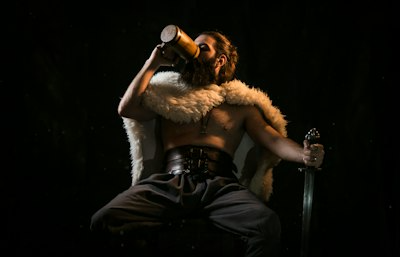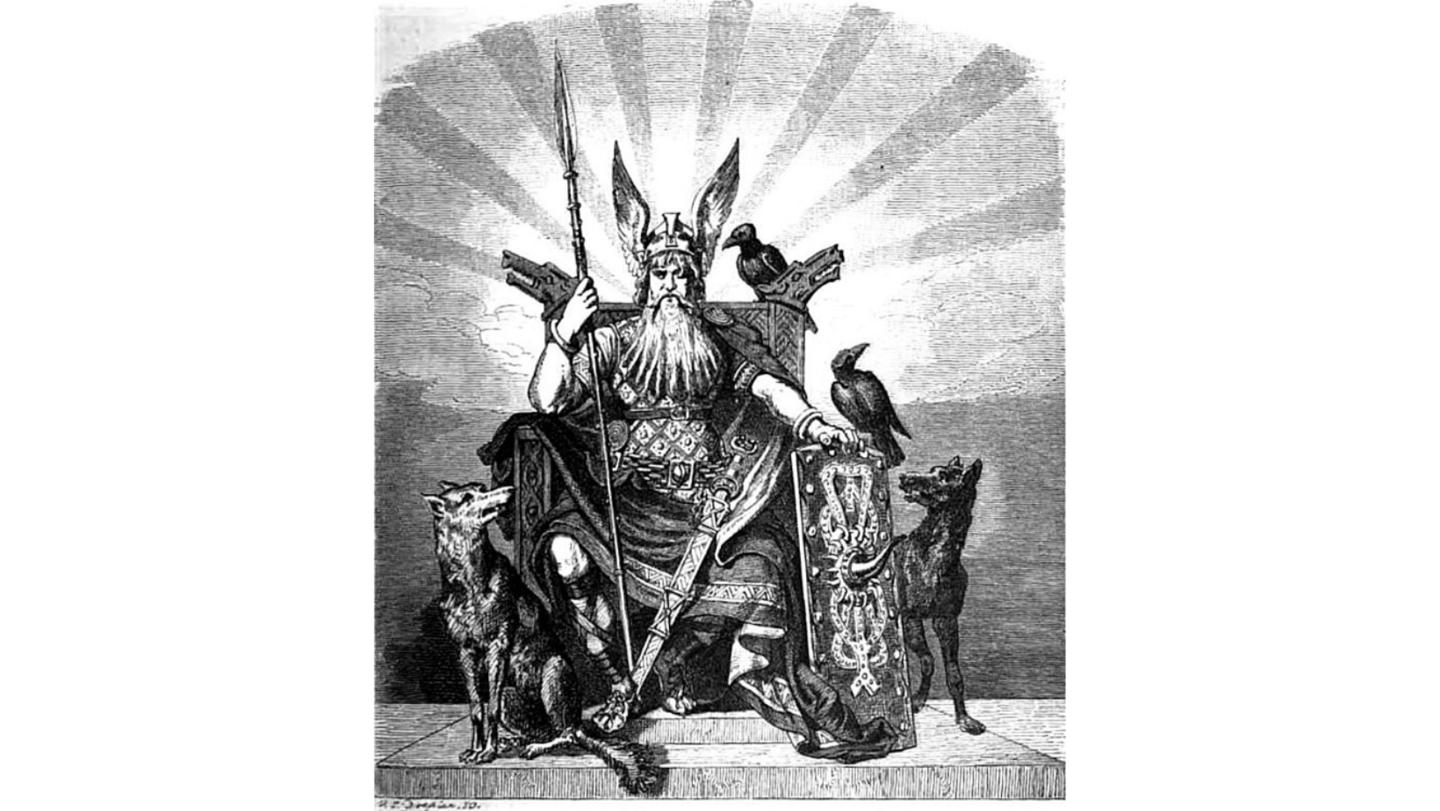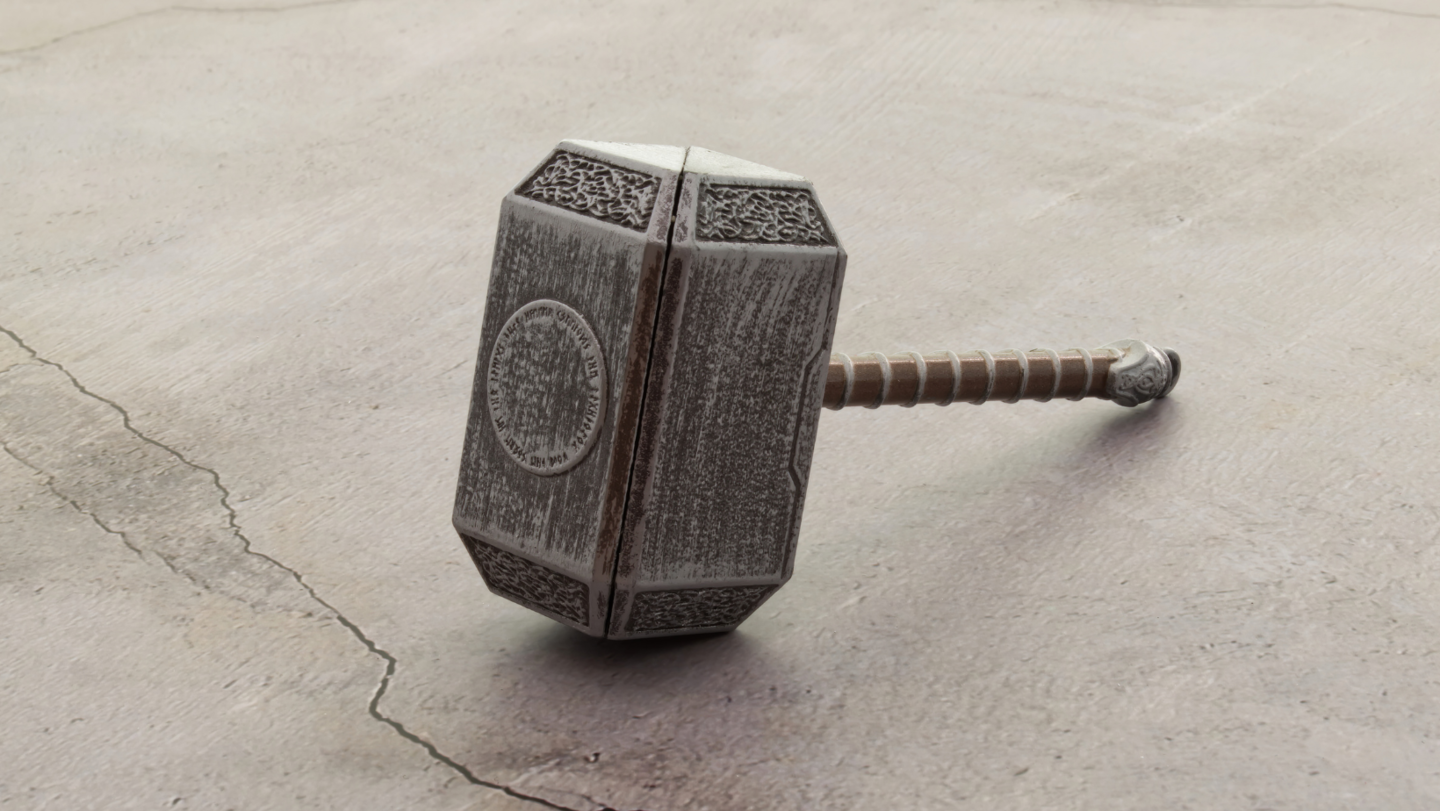Have you ever wondered what role did Norse mythology play in Viking culture? Picture this: a fierce warrior with a braided beard brandishing his weapon under the glow of an aurora-filled sky. This image ingrained deep within our collective consciousness, is only one piece of the rich tapestry that was the Viking era.
In this exploration, we’ll unravel how beliefs in Viking gods like Odin and Thor shaped everything from their approach to warfare to agriculture practices. We’ll delve into how these deities influenced their rituals and festivals and even touched upon everyday life.
The winds of change didn’t leave them untouched, though. Christianity gradually crept into Nordic religion, too! Ready for an epic saga where pagan beliefs clash against newfound faiths?
Brace yourself as we set sail on this journey through time! So, what role did Norse mythology play in Viking culture? Let’s dive in.
Table Of Contents:
- The Importance of Norse Mythology in Viking Society
- The Gods and Goddesses of Norse Mythology
- The Role of Norse Mythology in Viking Rituals and Festivals
- Norse Mythology in Everyday Life
- The Influence of Christianity on Norse Mythology
- Norse Mythology and Viking Warriors
- The Creation and Structure of the Norse Cosmos
- FAQs in Relation to What Role Did Norse Mythology Play in Viking Culture
- Conclusion: What role did Norse mythology play in Viking culture?
The Importance of Norse Mythology in Viking Society

What role did Norse mythology play in Viking culture? Norse mythology held a pivotal role in shaping the Viking society. From influencing their beliefs about death and the afterlife to defining warfare practices, it seeped into every aspect of life during the Viking Age.
Beliefs about Death and Afterlife
The Vikings perceived death as a transition rather than an end. Dying bravely on the battlefield was considered honorable because they believed that such heroes were welcomed into Valhalla, Odin’s great hall.
This belief gave rise to elaborate burial mounds filled with weapons, tools, jewelry, and sometimes even human corpses – servants or slaves sacrificed to accompany their masters in the afterlife.
Warfare Practices
Norse gods played significant roles in Viking warfare strategies. They offered prayers to Tyr for courage before battles, while Thor’s magical hammer was invoked for protection. Symbols representing these deities often adorned shields and banners on battlefields.
Vikings were also known for using sacrifices before war campaigns seeking favor from these divine beings who would then aid them towards victory.
The interweaving of mythological elements wasn’t confined only to somber realms like mortality or warfare but extended its influence over everyday tasks too.
Norse god Freyr ruled over fertility, ensuring good harvests, whereas his sister Freya bestowed love upon people.
Thus, Norse mythology governed not just spiritual facets but mundane activities as well, making it an inseparable part of Viking culture.
It must be noted, though, how gradually Christianity started seeping into this polytheistic framework, changing perceptions significantly.
Yet what remained constant through centuries is how profoundly these myths affected societal norms during that era, reflecting strongly upon Viking society’s cultural fabric.
The Gods and Goddesses of Norse Mythology

Norse mythology, the spiritual backbone of Viking culture, boasted a pantheon of gods, each with unique attributes. Let’s start our journey with Odin – The Allfather.
Odin – The Allfather
As the chief deity in Norse mythology, the God Odin commanded great respect among Vikings. He was known for his wisdom and leadership skills but also as a god who could be quite unpredictable at times.
Beyond Odin, there were several other significant deities that played crucial roles in shaping the beliefs and practices during the Viking era. Famous Norse gods included Ymir, Thor, Ullr, Modi, Balder, and Freya, to name just a few. Each had its own special place within this complex Norse belief system, which heavily influenced every aspect of daily life during these ancient times.
Vikings believed these gods aided them in battle, lending an extra layer of significance to their worship rituals; after all, good fortune on the battlefield meant survival. Interestingly enough, even sports had a patron deity in Norse beliefs: Ullr, the god of sports.
A Glimpse into Their Divine Roles
Freyja is one such example of a Norse goddess who embodied love, beauty, fertility, and warcraft. Her brother Freyr symbolized prosperity, abundance, weather, peace, and joy, highlighting the intricate balance between male and female forces in the natural world according to the Viking worldview. Now imagine wielding Thor’s hammer to fight frost giants to preserve cosmic order. Sounds exciting, right? Indeed, legends and heroes traversing the nine realms, equipped with magical weapons made by dwarves (mythical creatures) who were master blacksmiths, isn’t a surprise. Therefore, Vikings held their gods in high esteem and sought their blessings in various facets of life.
These powerful figures from Norse mythology not only provided a sense of security but also served as models for behavior. Their actions and interactions in the myths guided Viking ethics, offering lessons on honor, bravery, loyalty, and wisdom.
Key Takeaway: What role did Norse mythology play in Viking culture?
Through the lens of Norse mythology, Vikings found guidance and inspiration in their daily lives. The pantheon’s gods – from Odin to Freyja – embodied distinct qualities that influenced Viking values like honor, bravery, and wisdom. They even sought divine help for survival in battles or sports.
The Role of Norse Mythology in Viking Rituals and Festivals

Viking rituals and festivals were deeply rooted in Norse mythology. It was a vital part of the Viking era, shaping not just their spiritual beliefs but also influencing social activities.
Take, for instance, the summer feast. This event marked midsummer when Vikings held sacrificial ceremonies to honor their gods. They believed that offering animal or sometimes even human sacrifices would appease the gods and bring them good fortune. The act was so central to Nordic religion that burial mounds from this period often contained human corpses alongside various offerings.
A significant figure during these events was Thor, son of Odin’s wife Frigg. Known for his magical hammer called Mjölnir (often referred to as Thor’s Hammer), he was seen as a protector god who kept away frost giants – monstrous creatures feared by many in Old Norse society.
Sacrifices made during these feasts were often hung on trees within sacred groves dedicated to specific deities like Freyja, sister of Freyr – another key member of the Vanir family along with Njordr (their father). These places served as important meeting points where decisions regarding communal matters were taken based on advice provided by religious leaders interpreting divine signs. Snorri Sturluson’s Prose Edda, one reliable source documenting such practices, provides more details about this aspect of Viking life.
Norse Gods lived high above humans according to belief systems documented in Poetic Edda – a compilation of ancient poems. Gods like Odin, Thor, Loki, and Baldr had an immense impact on how Vikings worshipped and carried out rituals.
Wolf Fenrir is just one example. This offspring of Loki had a key role in Ragnarok, the apocalypse. His threatening presence kept folks on their toes, cautious not to anger their gods and thus maintaining ritualistic practices. For more on Wolf Fenrir, feel free to explore.
Key Takeaway: What role did Norse mythology play in Viking culture?
Norse mythology was the backbone of Viking rituals and festivals, deeply influencing their societal activities. Vikings held sacrificial ceremonies like summer feasts to honor gods such as Thor, believing it would bring good fortune. These gatherings often took place in sacred groves dedicated to specific deities, serving as significant meeting points for community decisions. Notable among these gods were Odin, Thor, Loki, and Wolf; each one played a unique role within the rich tapestry of Viking beliefs.
Norse Mythology in Everyday Life

The Vikings’ everyday life was deeply steeped in Norse mythology. They believed their daily tasks and fate were intertwined with the whims of the gods.
Vikings prayed to Norse gods like Sif, goddess of earth and crops, and Freyr, god of prosperity. These prayers were particularly intense during planting or harvest seasons. The evidence suggests that a good harvest wasn’t just about hard work but also relied on good fortune bestowed by these deities.
Ash trees held significant meaning for them as well. It represented Yggdrasil, an immense ash tree central to their cosmology, which they thought spanned through all realms of existence, including Asgard, where Odin’s great hall is located along with other main gods from the Aesir family, such as Thor, son of Odin, Loki, and Baldr – a god beloved by all except one.
Symbols Worn Daily
Jewelry often depicted elements from their faith, like Thor’s hammer called Mjölnir, symbolizing protection against enemies; this helped them feel closer to the divine forces at play around them.
Burial Practices Reflecting Beliefs
Even in death, their pagan beliefs shone through. They buried human corpses with personal belongings as a sign of preparing for the journey into the afterlife. The goddess Hel, who ruled over Niflheim—a realm dedicated to deceased souls—kept a watchful eye on them according to old Norse traditions. These stories were mostly passed down orally, and we owe much of our knowledge about these early Viking era myths and tales to Snorri Sturluson, who authored the Prose Edda.
The Influence of Christianity on Norse Mythology
Most folks in Scandinavia were heathens at the beginning of the Viking Age, holding a deeply-rooted faith system based on Norse mythology. They held a deep-rooted belief system based on Norse mythology. An intriguing alteration occurred as time progressed. Vikings started to be more open to accepting the Christian god.
Norse mythology had similarities to Christian beliefs. These overlaps might have eased this gradual transition towards Christianity. Let’s explore how these two religions interacted and influenced each other during the Viking era.
Vikings Conversion to Christianity
In early Viking times, polytheism was widespread – they worshipped multiple gods like Thor and Odin for good fortune or protection from frost giants. However, with exposure to new lands through exploration and trade came contact with monotheistic religions such as Islam and especially Christianity.
Evidence suggests that King Harald Bluetooth converted Denmark into a Christian nation around 965 AD for political reasons rather than faith itself—Christianity symbolized powerful alliances with European kingdoms, which could bring wealth and security.
Adoption of New Rituals & Practices
The conversion wasn’t instantaneous, but the Vikings converted over centuries; old Norse practices gradually changed or merged with Christian ones. For instance, burial mounds became less common while burials inside churches increased—a practice borrowed from Christians who believed in resurrection near St Peter’s Church on Judgement Day.
An intriguing aspect is also seen in human corpses’ treatment during funeral rituals—Ibn Fadlan noted that slave girls were sometimes sacrificed along with their masters (an echo of ancient Nordic religion) even after adopting Christianity due to its strong grip over societal norms.
Syncretism of Norse and Christian Elements
The shift wasn’t merely a replacement but rather an amalgamation of the two faiths. A fascinating example is found in Snorri Sturluson’s Prose Edda, where he attempts to align pagan beliefs with biblical chronology—indicating that ancient gods were actually mortal heroes from Troy.
Even so, some age-old traditions have managed to stay the same.
Key Takeaway: What role did Norse mythology play in Viking culture?
Vikings started off as pagans, deeply rooted in Norse mythology. However, exposure to new lands brought them into contact with Christianity, prompting a gradual shift towards the monotheistic faith. This wasn’t an overnight change; it happened over centuries, seeing old Norse practices morphing or merging with Christian ones. The result was a captivating fusion of both belief systems instead of complete abandonment of one for the other.
Norse Mythology and Viking Warriors
Viking warriors were renowned for their fearless image, which was largely shaped by the influence of Norse mythology. Often seen wearing symbols representing Norse gods during battles, these mighty fighters believed that such talismans would bring them good fortune.
The belief in Norse gods like Thor, Odin, and Loki ran deep within Viking society. The god of war wasn’t a distant figure but an integral part of their lives – providing strength in battle and protection from enemies.
Odin’s great wisdom was said to have been obtained through self-sacrifice when he hung himself from Yggdrasil (the ash tree). He represented the relentless pursuit of knowledge, while Thor, son of Odin, with his magical hammer Mjolnir, symbolized power and defense against chaos. Even Trickster Loki played a significant role, as they respected cunning just as much as brute force.
In death, too, Vikings found solace in their pagan beliefs about Valhalla – the majestic hall where fallen warriors spent eternity feasting and fighting under Odin’s watchful eye. Burial mounds often contained weapons or other artifacts associated with warfare to help ensure this afterlife journey.
Beyond merely worshipping these deities, there is archaeological evidence suggesting that early Viking era human sacrifices were made at sacred groves dedicated to specific gods such as Freyr – considered a bringer of peace & prosperity or Frigg- Odin’s wife who held sway over love & destiny.
A Change Through Time: What role did Norse mythology play in Viking culture?
However, as time passed, King Olaf Tryggvason started introducing Christianity into Scandinavia around 1000 AD, resulting in conversion on a mass scale, including Harald Bluetooth, who had once been a fervent pagan. The gods’ people worshipped gradually changed from Thor and Odin to Jesus Christ, with Norse mythology becoming more of a folklore than religion.
Even after many years, the impact of old Norse traditions and literature is still felt. This can be seen in sagas such as Poetic Edda or Prose Edda, which were written by Snorri St.
Key Takeaway: What role did Norse mythology play in Viking culture?
As the years rolled by, around 1000 AD, Christianity started to seep in. The once fervent pagan beliefs slowly lost their vibrancy and became mere folklore.
The Creation and Structure of the Norse Cosmos
Vikings held a cosmic view of their universe that was rooted deeply in Norse mythology. Central to this cosmos was Yggdrasil, the giant tree. The idea of such an enormous ash tree might seem outlandish today, but it had a profound significance for Vikings.
Yggdrasil served as an anchor point, connecting different realms where gods and humans lived. Asgard, home to most Norse gods like Odin and Thor – who were akin to superstars on the divine stage – was linked by Bifrost (the rainbow bridge) to Midgard (Earth). This connection between heaven and earth wasn’t just symbolic; it underscored how integral these celestial beings were in Viking life.
In this elaborate structure of existence within which both deities and mortals moved about, there existed nine worlds. Each world housed distinct entities ranging from frost giants in Jotunheimr to dwarfs in Svartalfheim. In contrast with our current scientific understanding of space-time continuums or parallel universes, perhaps.
This Nordic concept paints its own unique picture: one where mythic creatures resided not light-years away but just across mystical bridges. For Vikings, however fantastical these tales may appear now, they formed their reality then.
A key part often overlooked is that while Yggdrasil held together various planes including Alfheimr inhabited by light elves or Hel ruled over by Loki’s daughter Hel herself—it also suffered constantly under attack from Nidhogg the dragon gnawing at its roots.
This speaks volumes about ancient Viking belief systems encapsulating notions about cycles – creation, destruction, and regeneration – an infinite loop echoing nature’s rhythms around them…
So, next time you gaze at an ash tree or witness a rainbow arching across the sky, consider how Vikings saw these everyday phenomena. For them, they weren’t just beautiful aspects of nature but fundamental threads woven into their cosmic tapestry.
Understanding this captivating Norse cosmos view requires us to dig even deeper. But remember, our knowledge today is still growing and evolving.
Key Takeaway: What role did Norse mythology play in Viking culture?
This deep-rooted belief system painted their everyday life with layers of meaning, transforming simple elements into significant symbols. From the mighty ash trees to brilliant rainbows, nothing was trivial in their world – each element carried a cosmic significance that tied them closer to the divine realms.
FAQs in Relation to What Role Did Norse Mythology Play in Viking Culture
How did Norse mythology influence Viking culture?
Norse mythology shaped every facet of Viking life, from their warfare tactics to daily chores. It guided societal norms and gave meaning to their existence.
What were the roles in Viking culture?
Viking society was diverse, with farmers, warriors, traders, and explorers. Each role had its own importance tied to survival and prosperity.
What is the role in Norse mythology?
In Norse mythology, gods played crucial roles, like controlling nature’s forces or symbolizing virtues. They helped Vikings navigate through life’s challenges.
Did Vikings worship Norse mythology?
Absolutely. The Vikings revered a pantheon of deities from Norse Mythology, including Odin for wisdom and Thor for strength.
Conclusion: What role did Norse mythology play in Viking culture?
So, we’ve journeyed through the sagas of old to explore what role Norse mythology played in Viking culture. We discovered how beliefs in Odin and Thor permeated every aspect of life, from warfare to agriculture.
We unveiled the intricate tapestry of gods and goddesses that shaped their worldview. From Freyr bringing good harvests to Sif offering protection, each deity had a purpose.
We also examined rituals and festivals colored by these ancient myths, an awe-inspiring display of devotion. Yet even as pagan roots ran deep, Christianity gradually found its way into Nordic religion, too!
The lessons learned? Vikings weren’t just fierce warriors – they were complex individuals guided by faith and tradition. Their belief system influenced not only them but continues to inspire us today with its richness and depth.
What role did Norse mythology play in Viking culture? Hopefully, you have a much better understanding now!

